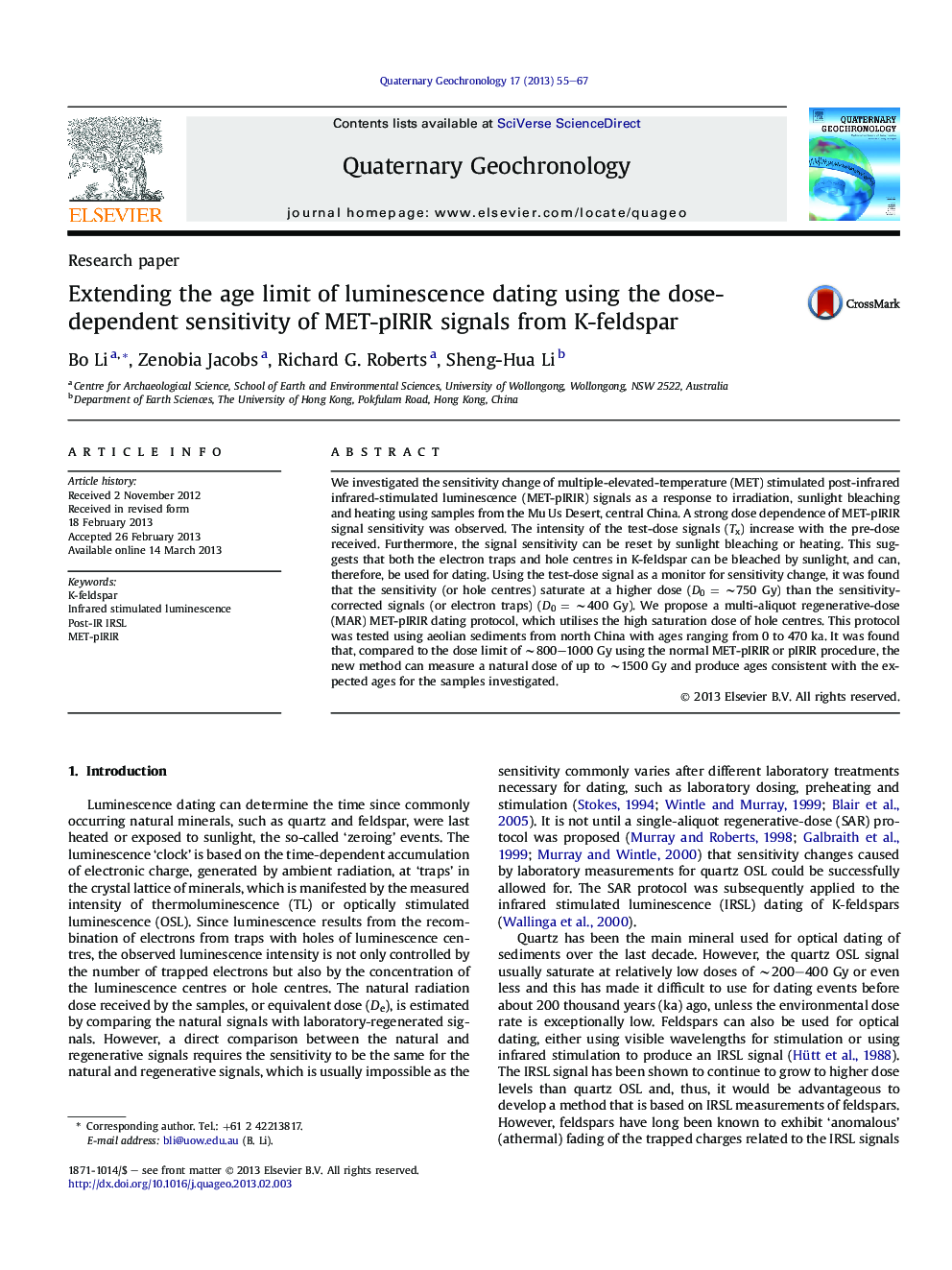| Article ID | Journal | Published Year | Pages | File Type |
|---|---|---|---|---|
| 4725057 | Quaternary Geochronology | 2013 | 13 Pages |
We investigated the sensitivity change of multiple-elevated-temperature (MET) stimulated post-infrared infrared-stimulated luminescence (MET-pIRIR) signals as a response to irradiation, sunlight bleaching and heating using samples from the Mu Us Desert, central China. A strong dose dependence of MET-pIRIR signal sensitivity was observed. The intensity of the test-dose signals (Tx) increase with the pre-dose received. Furthermore, the signal sensitivity can be reset by sunlight bleaching or heating. This suggests that both the electron traps and hole centres in K-feldspar can be bleached by sunlight, and can, therefore, be used for dating. Using the test-dose signal as a monitor for sensitivity change, it was found that the sensitivity (or hole centres) saturate at a higher dose (D0 = ∼750 Gy) than the sensitivity-corrected signals (or electron traps) (D0 = ∼400 Gy). We propose a multi-aliquot regenerative-dose (MAR) MET-pIRIR dating protocol, which utilises the high saturation dose of hole centres. This protocol was tested using aeolian sediments from north China with ages ranging from 0 to 470 ka. It was found that, compared to the dose limit of ∼800–1000 Gy using the normal MET-pIRIR or pIRIR procedure, the new method can measure a natural dose of up to ∼1500 Gy and produce ages consistent with the expected ages for the samples investigated.
► A strong dose dependence of the sensitivity of MET-pIRIR signals was observed. ► The sensitivity of the MET-pIRIR signals can be reset by sunlight bleaching or heating. ► The sensitivity of the MET-pIRIR signals has a high characteristic saturation dose (∼750 Gy). ► We propose a protocol utilising the high saturation dose of the sensitivity of the MET-pIRIR signal. ► The method can measure a dose of up to ∼1500 Gy and produce ages consistent with the expected ages.
